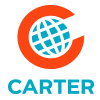After four years of dating and precisely 350 days into our marriage, I made the mistake of asking my new bride, “Do we really need to do anything special for Valentine’s Day… now that we’re married?”
Her response was clear.
“Only if you’d like to stay married…”
Far too often, it can be a comic and tragic reality that we mistake relationships for something we work to cultivate and not something we work to develop and nurture. Nonprofits do not have the luxury of being able to make this mistake.
Initial success can reflect the effectiveness and relatability of an organization’s mission. But long-term success depends on the ability to not just cultivate new relationships but also develop and nurture existing relationships within and throughout the organization.
Like a couple celebrating their first Valentine’s Day, it is no secret that relationships carry the power to spark exponential momentum for new supporters. Word-of-mouth marketing isn’t just the oldest form of advertising in the book; it remains by far the most effective. Generous donations, enthusiastic volunteers and well-groomed staff all often come into our organizations either at the recommendation of a currently engaged supporter or by way of an inspiring impact story from a trusted source. However, employment trends and fundraising data suggest that trust has become as crucial in retention as it has been in acquisition.
A Matter of Trust and Survival
Donors and volunteers have never had a richer market competing for their attention and resources, and potential supporters are quick to support the organizations they deem most trustworthy. A decline in donor trust has been well-documented, but it would be a mistake to conclude that donor trust is less important. Instead, this demonstrates nonprofit organizations’ opportunities to build stronger and more sustainable relationships. The pandemic and cultural realities have made it more difficult to trust the future and virtually anything else.
Just like the couple maturing past their first Valentine’s Day (notice a theme here?), the solution is to become more intentional about relationship development. Potential donors have expressed a desire “to ease into relationships with organizations before fully committing to a cause.”
Too many organizations mistake this sentiment for a cultural trend. The reality is the decline in donor retention indicates opportunities that are too often neglected — money left on the table, almost literally — when relationship development is not properly acknowledged. There are three levels of relationship development within your organization that could significantly increase its vitality immediately and in the years to come: donor development, staff development and end-user development.
Donor Development
Amid the ceaseless communications streams that saturate our devices, it is easy to assume that our donors wish not to be bothered. Bob Carter, Chairman of Carter, was quick to remind nonprofit leaders, “hearing about your organization’s work is not a nuisance; it is often an indication of the signs for hope and progress that we are all yearning for.” Not only does your organization’s work become a source of pride, but it also serves as a beacon of “good news” in a time when bad news seems to be getting most of the press.
In addition to sharing good news, your organization can meet a need that has been expressed across the world in the last two years especially, the need to be connected. Although there is no shortage of social mediums to explore and “news” reports to read, most of us feel the consequences of missed gatherings and connections, and we long to re-engage. This presents an opportunity for organizations to reintroduce or ramp up their engagements — gatherings, “fun-raisers,” and the like. In doing so, organizations are likely to find the events that seemed superfluous a few years ago are both meaningful and needed now.
Staff Development
If there is one thing we know by now, it is how difficult it can be to live well while doing good. Those working in the nonprofit sector have in some ways been living through the last couple of years with two major impacts on their lives: they are navigating their own personal distress and absorbing the impact of Covid-19 on the cause they are serving. During the realities of “The Great Resignation,” one thing is certain: attention to corporate culture is imperative to staff retention.
The greatest investment that organizations can make in their staff is taking the time to evaluate past objectives, clarify current needs/expectations, and strategize for future opportunities. Prioritizing staff retreats that make space for these discussions is not a luxury; it is a necessity. Similarly, board members, though less impacted by employment trends, also need the opportunity to connect with their organizations through the formative work of these guided conversations. Although the overwhelming workload most organizations face can make them feel as if there is no time to spare, forgoing these needs often leads to miscommunication, burnout and even conflict in the not-so-distant future.
End-User Development
As time seems to be the resource that is most precious, it becomes essential for organizations to optimize operations while maximizing their potential. The most effective and efficient way to do this is through end-user development. Listen to and involve those who are impacted by your mission and give them a podium to share their success story. Staff and volunteer efforts can only go so far, and an organization’s reach must stretch further than those limits. An organization that can utilize their end-user’s voice most effectively can exponentially compound upon their past successes, which optimizes their organization’s work efficiency and generates increased enthusiasm with their donor base.
When organizations commit to asset-based messaging, they create paths where end-users can become advocates for the mission. Organizations would otherwise have to wait and hope to develop intangibles that are already developed within their end-users, such as passion and institutional history. Thus, exploring and creating opportunities for development amongst your organization’s end-users celebrates your organization’s past and can contribute to future successes.
Investing Today; Thriving Tomorrow
Taking the time to further develop the relationships already established within an organization can seem too long-term to be urgent.
So can changing the oil in a car engine.
So can maintaining the appliances in a home.
We know these things about relationships:
- Relationships are not static. At all times, they are either evolving or digressing.
- Relationships are foundational to philanthropic success.
- Relationships require time and intentionality.
Taking the time to intentionally nurture your organization’s relationships is a transformative and self-sustaining investment that never stops paying dividends. The fact that it’s also fun and rewarding is a bonus…like a good piece of Valentine’s Day chocolate!
About the Author

Neal Watkins, Director, Emerging Opportunities & Special Engagements
Neal Watkins, a new member of the Carter team as Director, Emerging Opportunities & Special Engagements, is a creative and dynamic facilitator and speaker. Neal works with executive leaders, professional staff, trustees and volunteers to strengthen culture and build effective partnerships. His counsel is primarily focused on improving organizational capacity through strategic planning, adaptive programming and special events. Neal is widely recognized for his ability to create authentic engagement and interactive discussions that foster innovation and optimize resources.
About Carter:
When it comes to transformational change, nonprofits are experts at knowing what they need to achieve but don’t always have the tools they need to get there. Carter makes the journey easier. With over 1,000 years of combined experience, the Carter team is comprised of over 40 senior-level professionals working to advance philanthropy worldwide through fundraising, organizational planning and governance. For more information, visit www.carter.global.


